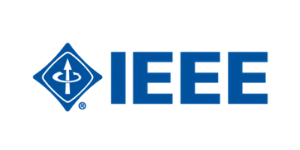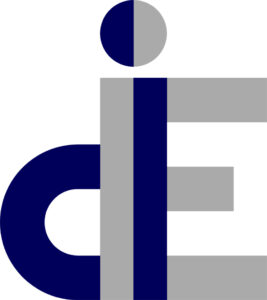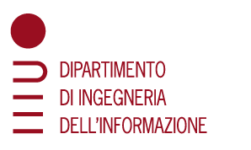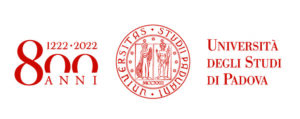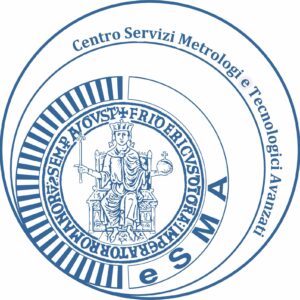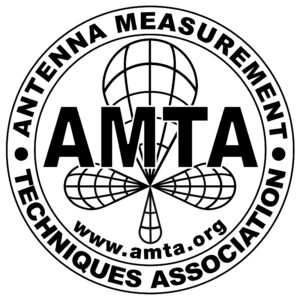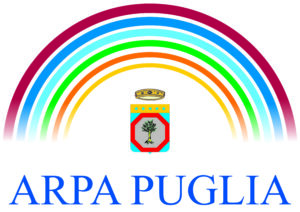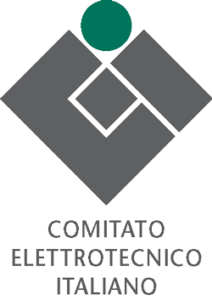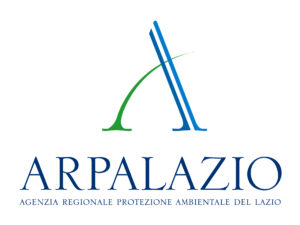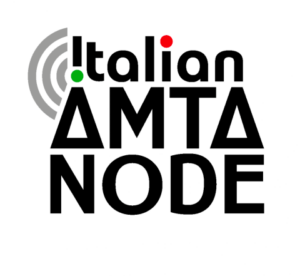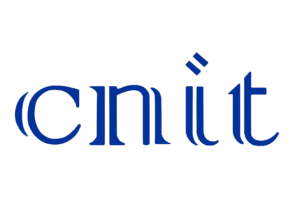SPECIAL SESSION #1: ENERGY SELF-SUFFICIENT SENSOR NETWORKS AND IOT DEVICES
Recent advances in semiconductor technologies and system-on-chips have favorized the development of smart, low-power and multi-functional solutions, widely employed in distributed sensing nodes deployments, in wireless sensor networks (WSN) and Internet of Things (IoT) networks, finding application in several operating scenarios (e.g. environment monitoring, automotive, smart home, smart cities, structural health monitoring, localization, healthcare etc.). Energy autonomy is a crucial feature for the distributed wireless data acquisition systems especially for those deployed in remote and hostile areas, where the human intervention must be avoided. Indeed, only a limited number of applications is designed to be deployed in sites where a connection to the grid is available or affordable. As a consequence, the primary energy sources for most IoT devices and sensor nodes are storage elements such as batteries or supercapacitors, which require frequent replacement or recharging, placing also problems related to their lifetime and to their disposal.
For this reason, there is a growing demand for solutions capable to extend the average lifetime of the sensor nodes and the IoT devices, granting permanent energy self-sufficiency, low cost and reliability over long periods of time. This has led to the integration of the nodes with energy harvesting devices based on novel energy provisioning techniques exploiting ambient energy sources (e.g., artificial lighting, solar, thermal, vibration, RF etc.). Moreover, the development of innovative data acquisition paradigms and programming techniques based on a low power perspective and the emerging of suitable communication technologies are topics of primary importance for achieving self-powered operations and extending the system lifetime.
Topics of interest in this special session include the following (but are not limited to):
- Energy harvesting circuits, solutions and techniques
- Novel energy harvesting principles and device structure designs
- Energy-efficient communication protocols
- Low power electronic design for sensor networks
- Design and development of autonomous low-power sensors
- Passive RFID sensor tags
- Low power wearable devices
- Distributed autonomous IoT measurement devices and systems
- LPWAN systems for measurements
- Large scale deployment of autonomous wireless measurement solutions (e.g. environment monitoring, health monitoring, localization, medical and biomedical sensing, Indoor implementation)
- Original contributions about the feasibility of energy harvesting in real applications
Organizers:
- Prof. Ada Fort, University of Siena, Italy
- Prof. Marco Mugnaini, University of Siena, Italy
- Dr. Irene Cappelli, University of Siena, Italy
- Dr. Matteo Intravaia, University of Siena, Italy
SPECIAL SESSION #2: AI/ML for Network Monitoring and Analysis
During the last decade Machine Learning (ML) and Artificial Intelligence (AI) have exploded onto the networking field. A plethora of AI/ML-based solutions haven been proposed, tested and validated for a wide variety of network monitoring and analysis tasks. ML techniques can be especially interesting for their capability to process the vast amount of data collected by network monitoring platforms nowadays, and to gain deep insights into this data. Moreover, state-of-the-art AI/ML techniques enable fast and efficient data processing, which makes them especially useful for building real-time network analytics platforms. As a result, the application of AI/ML techniques is gaining increasing attention at top-tier conferences in the area of network measurement and analysis, such as ACM IMC, ACM SIGMETRICS, IFIP TMA, or PAM.
This special session will call for contributions on Machine Learning (ML) and Artificial Intelligence (AI) applied to network monitoring and analysis.
Topics of interest include, but are not limited to, AI/ML-based techniques for:
- Network traffic measurement, characterization, visualization and classification
- Network anomaly detection and root cause analysis
- Attack/malware/vulnerability detection and classification
- Network modeling and performance evaluation
- Traffic modeling and forecasting
- Application-level, QoS and QoE-related measurements
- Analytics and compression of network monitoring logs
- Datasets, testbeds, simulation and benchmarking tools for AI/ML-based network monitoring and analysis
- Privacy, security, distributed learning in AI/ML-based network monitoring and analysis tools
Application domains (not limited to):
- Enterprise, campus and wide-area networks (WAN)
- Edge-based infrastructures, Internet-of-Things (IoT), home and broadband access networks
- Wireless, Cellular (5G/6G), Vehicular networks
- Cloud-based infrastructures, data centers
- Software-Defined Networking (SDN), Virtual Network Functions (VNF)
- Social networks
- Emerging paradigms: Quantum networks, Satellite networks, etc.
- Dr. José Suárez-Varela, Barcelona Neural Networking Center, Universitat Politècnica de Catalunya, Spain
SPECIAL SESSION #3: Security and Privacy in Cyber-Physical Systems
Cyber-Physical Systems (CPS) provide an interface between the operation and information technologies. This type of networks find application in many domains, such as cars, industrial networks, Internet of Things, smart grids, and drones. As data exchanged via information technology may impact the physical world, safety and security are strictly related in CPS. For instance, a malicious attack to a car’s network may cause a road accident, hence impacting on the driver’s safety. Therefore, it is fundamental to provide secure solutions against cyber-attacks in CPS. Among the other challenges, providing coherence between the physical and digital information is particularly hard. The scope of this special session is to bring together experts in the measurement and networking fields to deeply connect the operation and information technologies and provide secure solutions for CPS.
Topics of interest in this special session include the following (but are not limited to):
- Cyber-physical threat modelling and analysis
- Side channel attacks and solutions in CPS
- Attacks towards CPS
- Privacy issues in CPS
- Countermeasures against attacks to CPS
- Low complexity security solutions for CPS
- Scalability issues in secure CPS
- Integrity and coherence of cyber and physical information
- Dr. Alessandro Brighente, University of Padova, Italy
- Prof. Mauro Conti, University of Padova, Italy
SPECIAL SESSION #4: Antenna and RCS Measurements
Antenna Measurements have today a leading position in Applied Electromagnetics and uniquely appear under a keyword in many different but related areas of interest to Antenna Research and Industrial activities. The aim of the Special Session is to cover some of the most relevant topics on Antenna Measurements, including the characterization for radiating systems for 5G, that represent an exciting challenge and an important opportunity for the antenna and the Unmanned Aerial Vehicles (UAV) based measurement communities.
Topics of interest in this special session include the following (but are not limited to):
- Theory and applications of measurements of antennas and radar scattering
- 5G antennas measurement methods
- Advances in indoor and outdoor test ranges
- Measurement standards and laboratory comparisons
- Advances in near-field, far-field, compact and RCS range measurement techniques
- New instrumentation for testing, data acquisition and processing
- Diagnostic methods for antenna acceptance testing
- GNSS, PCS, cellular, satellite, and automotive antennas and measurements
- Numerical methods related to EM measurements
- RFID characterization
- Antenna calibration and uncertainty quantification
- Wearable antenna designs and measurements
- Multi-link MIMO and cooperative channels testing
- In-situ testing and channel sounding
- RF safety measurements
- UAV-based antenna measurements
- Dr. Claudio Curcio,Università degli Studi di Napoli Federico II, Italy
- Prof. Francesco D’Agostino, Università degli Studi di Salerno, Italy
- Prof. Yannis Vardaxoglou, Loughborough University, U.K.
SPECIAL SESSION #5: Human Exposure to Cellular Networks
The role of digital telecommunication technologies has dramatically evolved over the last few decades, becoming more and more pervasive in everyone’s life. Following this consolidated trend, it is expected an even more increase in human exposure due to multiple electromagnetic fields (EMFs) generated by such technologies. Focusing the attention on cellular systems, the measurement of human exposure to EMF is an important topic in today’s scenarios. In addition, the incoming 5G technology is expected to boost the development and implementation of other EMF-related services, resulting in the continuous (long-term) or short-term exposure of the entire population to EMFs. For this reason, the topic of the assessment of human exposure to EMFs is an up–to–date theme that will be even more of interest in the relevant research community as also shown by recent scientific literature by analyzing the measurement methods for reliable evaluation of human exposure to EMFs. There are several issues to be still addressed regarding the most reliable measurement procedures and the evaluation of the related measurement uncertainty. In particular, the high variability of the voice and data traffic makes it very difficult to achieve reliable forecasting of human exposure to 2G, 3G, and 4G systems in both narrowband and broadband measurements. Therefore, a refinement of measurement methods and procedures, as well as data post-processing and averaging techniques, should be suitably evaluated in the Special session.
The Special session aims to cover some of the most relevant topics about human exposure to EMFs, including the characterization for radiating systems for 5G, which represent an exciting challenge and an important opportunity for the measurement community.
Topics of interest in this special session include the following (but are not limited to):
- Operative measurement procedures and methodologies on RF telecommunication systems
- Extrapolation techniques for mobile telecommunication systems
- Technical regulation, measurement standards, and laboratory comparisons
- Evaluation and assessment of human exposure to EMFs
- New instrumentation for testing, data acquisition, and processing
- Numerical methods related to EM measurements
- literature and state-of-the-art knowledge review
- Prof. Marco Donald Migliore, University of Cassino and Southern Lazio, Cassino, Italy
- Prof. Darko Šuka, University of East Sarajevo, Faculty of Electrical Engineering, Bosnia and Herzegovina
- Prof. Enrique Arribas, University of Castilla-La Mancha, Spain
- Prof. Raquel Ramirez-Vazquez, University of Castilla-La Mancha, Spain
- Dr. Daniele Franci, ARPA Lazio (Agenzia per la Protezione Ambientale del Lazio), Rome, Italy
- Dr. Settimio Pavoncello, ARPA Lazio (Agenzia per la Protezione Ambientale del Lazio), Rome, Italy
SPECIAL SESSION #6: Short Range Tracking and Positioning
Tracking and positioning is a strong enabler from several applications, including for instance telemanipulation for remote surgery, line traceability, home assistance, and Location Based services. While outdoor and long-range positioning can be effectively achieved using the well-established Global Navigation Satellite Systems, accurate Short-Range Positioning Systems (SRPSs), especially in indoor scenarios, typically requires ad hoc solutions. Depending on the environmental characteristics, a broad set of sensing strategies can be applied, that include transmission of ultrasound or electromagnetic signals, geomagnetic field measurements, or optical and inertial measurements. Several estimation techniques do apply as well, like for instance Bayesian estimators or Machine Learning algorithms. Short range positioning systems are also strongly tied to the Internet of Things and Industrial Internet of Things paradigms, being usually based on a distributed measurement system. As such, SRPSs require the design of proper sensing, processing, and communication infrastructure to carry out the position measurement and make the results available to any client application.
This special session targets innovative results concerning the design, characterization, and validation of SRPSs and their application.
- Dr. Francesco Santoni, Università degli Studi di Perugia, Dipartimento di Ingegneria, Italy
- Dr. Filippo Milano, Università degli Studi di Cassino e del Lazio Meridionale, Dipartimento di Ingegneria Elettrica e dell’Informazione, Italy
SPECIAL SESSION #7: Point and Distributed optical fiber sensing in diverse application fields
Optical sensing techniques are used in a large variety of measurement application fields. For instance, optical fiber sensors and biosensors are, nowadays, exploited in many important fields, including pharmaceutical researches, medical diagnostics, environmental monitoring, structural health monitoring, physical parameters detection, industrial applications, food safety and security, whenever fast, portable, low cost and/or rugged devices are needed for detection and identification. Moreover, highly compact label-free optical fiber bio/chemical sensors can be explored for “Smart Cities” applications, as in water or air quality monitoring, through an IoT (Internet of Thing) approach, or, alternatively, they can be used onboard simple robots, based on an autonomous operation, to map the concentrations of pollutants in several scenarios. Similarly, distributed optical fiber sensing is currently one of the most rapidly developing areas of photonics, with applications ranging from the oil and gas industry to biomedical inspections with sub-mm spatial resolution.
The aim of this Special Session is to bring together researchers active in the innovative developments of interrogation schemes, physical scattering mechanisms, and applications of sensor systems realized exploiting optical fibers.
Works addressing the wide aspects of this technology are sought, including but not limited to, recent developments in:
- New measurement schemes for sensing in optical fibers
- hybrid devices
- innovative developments of transducer schemes
- smart optical materials
- novel kinds of receptors
- nano-materials, nano-devices
- novel optical fiber cable design
- specialty optical fibers for sensing and new applications
- Prof. Nunzio Cennamo, University of Campania “Luigi Vanvitelli”, Italy
- Prof. Aldo Minardo, University of Campania “Luigi Vanvitelli”, Italy
- Prof. Lugi Zeni, University of Campania “Luigi Vanvitelli”, Italy


